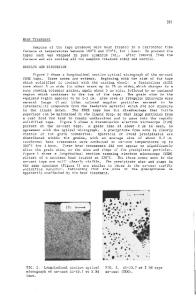Competitions incorporated in rapid solidification of the bulk undercooled eutectic Ni 78.6 Si 21.4 alloy
- PDF / 990,629 Bytes
- 11 Pages / 585 x 783 pts Page_size
- 91 Downloads / 470 Views
opting glass fluxing and cyclic superheating, high undercooling up to ∼550 K was achieved in bulk eutectic Ni78.6Si21.4 alloy melt. With increasing undercooling, the as-solidified microstructure shows an interesting evolution, i.e., regular lamellar eutectic, coarse directional dendrite, quasi-spherical dendritic colony, fine directional dendrite, fine quasi-spherical dendritic colony, and superfine anomalous eutectic. In combination with different theories for nucleation and growth, the microstructure evolution was analyzed and described using competitions incorporated in rapid solidification of the bulk undercooled eutectic Ni78.6Si21.4 alloy. For undercooling below and above 180 K, Ni3Si, and ␣-Ni are primarily solidified, respectively. This phase selection can be ascribed to competitive nucleation. As undercooling increases, a transition of the prevalent nucleation mode from site saturation to continuous nucleation was interpreted in terms of competition of nucleation mode. Accordingly, the superfine anomalous eutectic is obtained, due to the substantially increased continuous nucleation rate, i.e., grain refinement occurring at high undercooling (e.g., ∼550 K).
I. INTRODUCTION
Microscopically, nonequilibrium solidification consists of nucleation and growth, both of which are accompanied, assisted, and even initiated by several competitive processes. According to previous theoretical1–7 and experimental8–13 contributions, the competitions incorporated in nonequilibrium solidification can be summarized as follows: (i) competitions of nucleation mode, e.g., competition between homogeneous and heterogeneous nucleation; (ii) competitions of growth in singlephase alloy, e.g., competition of dendrite growth mechanism, and competitions in multiphase alloy, e.g., competition between dendritic growth and coupled growth and that between facet and nonfacet growth mode; (iii) competition of liquid/solid interface morphology, e.g., a transition of planar–cellular–dendrite–cellular–planar under different temperature gradients or growth velocities; and (iv) competitive nucleation or competitive growth correlated with phase selection. So far, a lot of experiments have already shown that substantial undercooling (⌬T) can be achieved in some alloy melts using levitation14,15 or glass fluxing,16 etc. a)
Address all correspondence to this author. e-mail: [email protected] DOI: 10.1557/JMR.2007.0380 J. Mater. Res., Vol. 22, No. 10, Oct 2007
http://journals.cambridge.org
Downloaded: 19 Mar 2015
Upon highly undercooled solidification, the interface thermodynamics and transport kinetics must be changed, thus strengthening the nonequilibrium effect on nucleation and growth. On this basis, competitions incorporated in rapid solidification of bulk undercooled alloy melt start to arrest sufficient attention. For Ni78.6Si21.4 alloy, equilibrium regular eutectic growth produces ductile ␣-Ni phase and brittle 3-Ni3Si phase of high strength.17 Undercooling experiments performed on this alloy by Goetzinger et al.,18 using the electromag
Data Loading...











